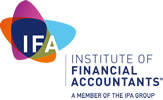Is pension relief being claimed?
If individuals make pension contributions personally or through their firm’s workplace scheme they're entitled to tax relief. However, thousands of people fail to claim this relief to the tune of an estimated £830m each year. How can they avoid missing out?

Statistics
Tax relief for pension contributions is going begging. Estimates of the amount unclaimed vary widely but even HMRC has suggested a figure that runs into hundreds of millions each year. The vast majority of this lost tax relief belongs to those who pay tax at higher rates.
Personally paid contributions
If individuals pay contributions from their bank etc., basic rate tax relief (20%) for most types of pension scheme is given at source. For example, if a pension plan is for contributions of £100 per month, the scheme member pays £80 and HMRC pays £20. If the individual is a basic rate taxpayer that’s the end of the matter, but not if they’re liable to tax at a higher rate. They're entitled to tax relief at the highest rate of tax they pay, but they must ask HMRC for it. This is where so many people miss out, especially those who don’t complete a self-assessment tax return.
To obtain higher/additional rate tax relief for contributions they must claim it each year on a tax return or by writing to HMRC giving amounts and details of the contributions.
The amount of contributions on which tax relief can be claimed is limited. The limit, known as the annual allowance, is usually £40,000 per tax year but can be a reduced to as little as £4,000. This should always be checked, especially for higher earners.
If an individual has a pension plan which began before April 1988, known as a retirement annuity contract (or “section 226” or “section 226A” contract), tax relief at source doesn’t apply. Whether tax is paid at the basic or higher rates, to obtain tax relief for contributions an individual must claim it each year on a tax return. If they don’t complete a tax return, they should write to HMRC giving details of the contributions they are claiming relief for.
Workplace pension contributions
If the individual's firm deducts pension contributions from their salary under its auto-enrolment or other workplace pension scheme, the entitlement to tax relief is the same as that for personally paid contributions. However, the method of obtaining relief can be different. There are two alternatives: net pay or relief at source. It might not be clear which a firm uses as different payroll software has different ways of showing it.
Net pay. If a firm uses the net pay method, the member is receiving all the tax relief they’re entitled to whatever rate of tax they pay on their total income. It even gives the correct tax relief if no tax is paid on the salary. Individuals therefore don’t need to claim any further tax relief or mention the contributions on a tax return. But the annual allowance trap mentioned earlier does apply and they should check they’re not getting too much tax relief.
Relief at source. If the firm uses the relief at source method, the position is exactly the same as for personally paid contributions. If the employee pays higher rates of tax on their total income they’ll need to claim the extra relief.
Related Topics
-
Dodging the 2027 IHT and pension changes
In a little over a year the inheritance tax (IHT) exemption for unused pension savings comes to an end. If you’re married or in a civil partnership, one simple step might save your estate thousands in IHT. What is it?
-
Act now to spread the cost of your tax bill
The deadline for filing your 2024/25 self-assessment tax return and paying the tax you owe is 31 January 2026. However, if you file your tax return early, you may be able to pay through your PAYE code instead. Are you eligible?
-
Electronic VAT return and payment due




 This website uses both its own and third-party cookies to analyze our services and navigation on our website in order to improve its contents (analytical purposes: measure visits and sources of web traffic). The legal basis is the consent of the user, except in the case of basic cookies, which are essential to navigate this website.
This website uses both its own and third-party cookies to analyze our services and navigation on our website in order to improve its contents (analytical purposes: measure visits and sources of web traffic). The legal basis is the consent of the user, except in the case of basic cookies, which are essential to navigate this website.